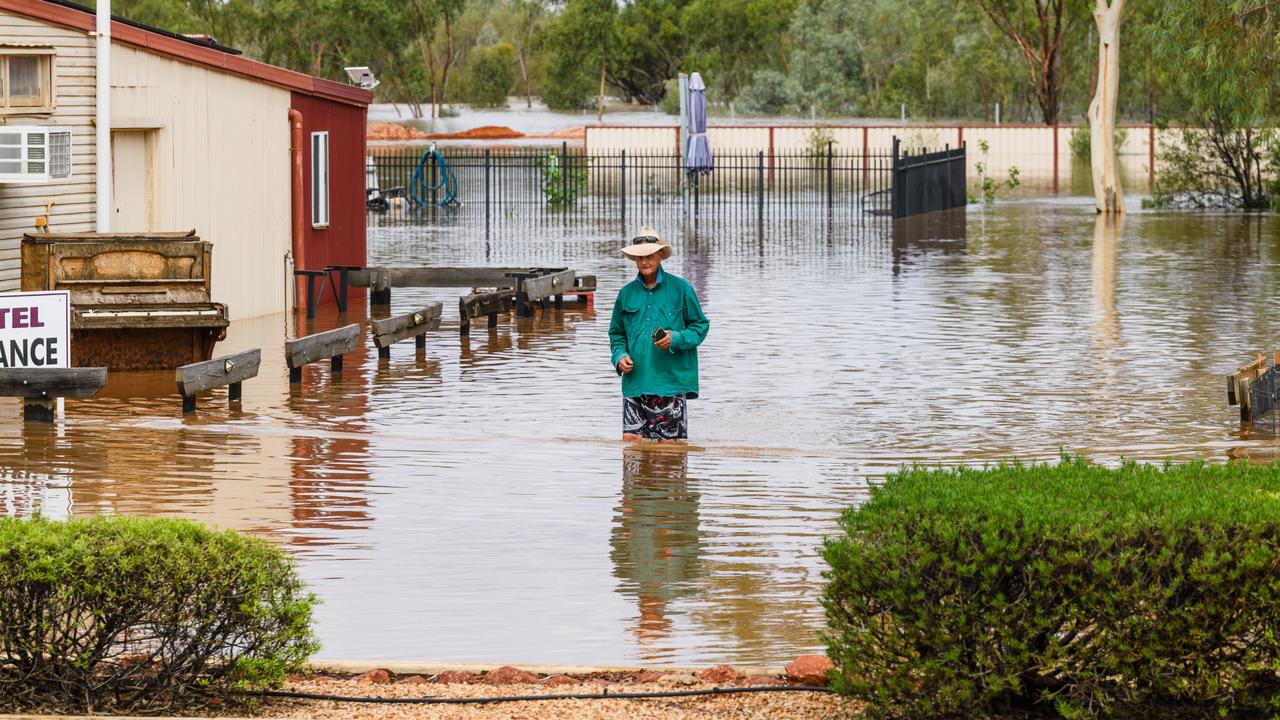
The record flooding at Thargomindah was devastating enough.
Then came the clean-up.
"It was like a bomb had hit it," local Donna Humphris told AAP.
Red dust flew around the town as the temporary dirt levee bank that was supposed to protect the southwest Queensland community was removed during the recovery.
When it settled, a distressing scene emerged.
Of the town's 146 buildings, only 12 were not affected by floodwaters.
Every business had been impacted.

"There are people who have lost everything," said Ms Humphris, who runs the local FoodWorks supermarket.
At one stage Thargomindah's entire 200-plus population fled their homes to higher ground amid the worst flooding in the town's history.
The community was among the hardest hit in one of Queensland's worst disaster seasons, with the damage bill set to eclipse $2 billion.
Thargomindah is still counting the cost.
Weeks after flooding eclipsed the local 1974 record level of almost seven metres, many have not been able to return to their homes.
About 30 people are in caravans with repairs to some flood impacted houses expected to take months.
"Ideally we want to use local where possible but we are going to need a lot of carpenters," Ms Humphris said.
"To be honest a lot will be in caravans for a long time.
"It would probably be the toughest thing we have been through."

Residents at nearby Adavale are assessing their future after floodwaters forced its entire population of about 30 to be rescued.
There is debate over whether houses in the tiny town should be razed as the full extent of Queensland's disaster season was revealed.
Thargomindah and Adavale were among an area the size of NSW that was inundated by the recent floodwaters, capping one of Queensland's worst disaster periods.
Queensland Reconstruction Authority estimates a damage bill of $2 billion and counting after the state was hit by multiple cyclones, record rainfall and severe flooding over the 2024-25 period.
About 207,000 cattle, 176,000 sheep, and 41,000 goats are believed to have been lost during the recent floods in southwest and western Queensland alone.

Across central and western Queensland more than 50 buildings have been assessed for severe damage along with over 80 for moderate and 70 for minor damage.
There have been 17 separate natural disaster events in Queensland since July 1, 2024, leading to the most activations of disaster recovery funding in state history.
Only four of Queensland's 77 local government areas had not been activated for support under disaster recovery funding arrangements in 2024/2025, the authority said.
"That just gives you a sense of the scale of this year ... land mass and the number of communities that have been impacted - this is certainly one of the biggest that we've seen," the authority's Jimmy Scott told AAP.

But all hope is not lost, especially at Thargomindah.
The local hotel is up and running along with other businesses including Ms Humphris' FoodWorks.
At one stage the population tripled when about 100 emergency services and energy workers arrived to help.
Disaster agency Forge Solutions is also assisting, removing levee banks, clearing flood waste, restoring access to properties and making structural assessments.
"It will be a long road, longer for some," Ms Humphris said.
"Recovery is going to be very slow, especially those who don't have insurance.
"But we will certainly bounce back."







